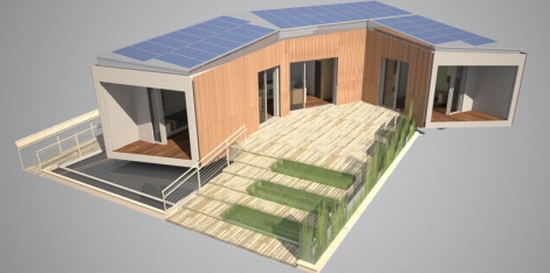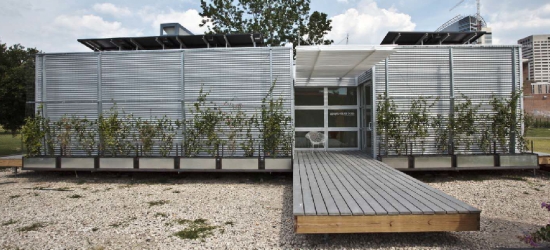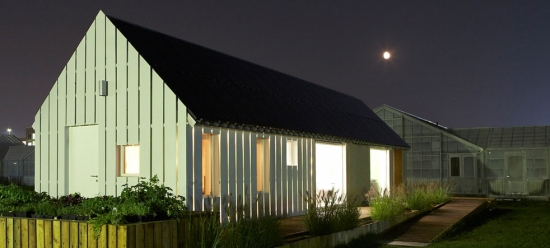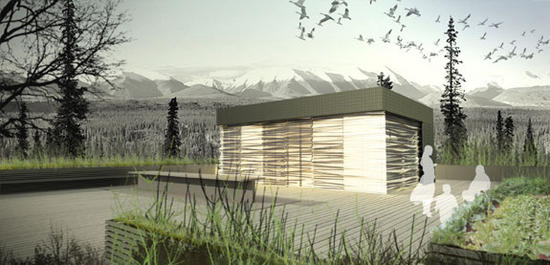The Solar Decathlon, an international collegiate contest designed to spur students to pursue careers in science and engineering, encourage the development of green technologies and raise public awareness of energy efficiency issues, this year has 20 teams giving tough competition to each other. Run by the U.S. Department of Energy, the Solar Decathlon 2009 is taking place on the National Mall in Washington, D.C.
The houses designed and built by students focusing on making them energy-efficient and solar-powered will be judged on 10 competitions, which range in point value, from architecture to lighting design to comfort zone. Here are the top five scorers for today:
1. Team California:

Santa Clara University and California College of the Arts have teamed up together to construct a house that’s both aesthetically pleasing and technologically sound. The house with a passive solar design system cuts down the need for further heating in sunny California. A solar thermal absorption chiller operates panels that will cool the house, and any leftover heat energy will be used for the solar hot water system. The windows are custom-designed for exposure with low-e glass, heat mirror film and krypton or argon fill. It also incorporates photovoltaic panels on the roof that will provide the house with electricity. The cost that has gone into making this green house lies between $450,000 and $650,000. The current score of the team is 359.122.
2. Team Germany:

Winner of the prize in 2007, Team Germany is all set to prove its talent yet again. This year the team started with a focus on the façade, creating a house that is essentially a two-story cube. The surface of the structure is completely covered by solar panels that are completely covered by solar panels. It also features automated louver-covered windows and a boiler integrated into the heat pump system that allows the system to provide domestic hot water as well as heating and cooling. The 24-member team consisting of many Technische Universitat Darmstadt architecture students have put in $650,000 to $850,000 for the construction. The present score of the team is 354.749.
3. Rice University’s Team:

Rice University’s Zerow house, unlike its other competitors, which are integrating high-concept, high-price features, was designed with affordability in mind. It is equipped with photovoltaic solar panels and other green technologies that produce enough energy to meet with its on-site energy requirements. A good $150,000 has gone into replicating the design and concept into six energy-efficient, one and two-bedroom homes on two 50-by-80-foot lots. The latest score of the team is 347.506.
4. Team Illinois:

Team Illinois displays its traditional-looking, gable-roof Midwest home that features new green technologies. The house is made from 100-year old barn wood and incorporates other features like highly efficient solar panels, and great insulation inside the building. The construction cost of the Gable House is between $250,000 and $450,000. The 200-member team has designed it to generate four times the amount of energy it needs. The latest score of the team is 341.767.
5. Team Ontario/BC’s:

Team Ontario has entered the competition with their creation, which they call the North House. It is designed keep in mind the cold northern latitudes. So, the structure incorporates highly insulated, quadruple-glazed, floor-to-ceiling glass on the south, east and west sides for passive solar heating. It also includes vertical PV panels that form a frame around the glass, plus rooftop PV panels that are optimized for capturing winter solar energy. This team of students from the University of Waterloo in Ontario, Ryerson University in Toronto, Ontario, and Simon Fraser University in Vancouver, British Columbia has invested $650,000 to $850,000 for its construction. The current score of the team is 341.517.

